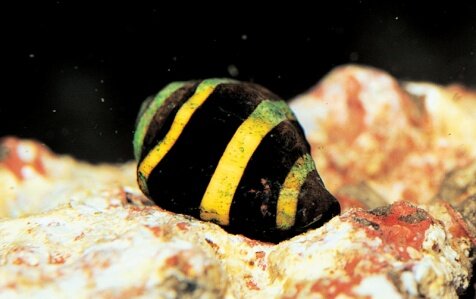Bumblebee Snail
From Microcosm Aquarium Explorer
The colors of their shell resembles the yellow and black banding pattern of some wasps or bees. Scott W. Michael
Overview
These are among the prettiest little snails sold to to marine aquarists, but they are carnivorous and ignore algae while instead hunting polychaete worms and other valuable citizens in the aquarium sand bed.
They will scavenge some food scraps, but on balance may be a negative addition to most aquariums.
It is a fairly hardy species, but one you may not want.
Family: Buccinidae
Other common name(s):
Native range:
Habitat: This species is found in shallow water throughout the Indo-Pacific.
Maximum length: 1.3 cm (1 in)
Minimum aquarium size: 38 L (10 gal)
Lighting: Immaterial.
Water: Marine 24 °C (75 °F) - 28 °C (82 °F)
Feeding
The Bumblebee Snail is sold as a scavenger that will consume uneaten meaty food or carrion, but it is predatory on other snails and worms.
Aquarium Compatibility
Questionable addition to a reef tank. An Engina individual will prey on beneficial polychaetes and other snails. In tanks with sand beds, it is likely to eat sand-dwelling worms.
Notes
These are small whelks with a shell that has spiraling yellow or white stripes. It has a more-or-less rectangular aperture, with a thickened outer edge, which typically has several bumps extending into the aperture. In fully adult animals, the aperture may be quite narrow.









